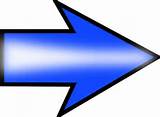In
his letter to Prichard, Lawrence - significantly - echoes
his "silvery freedom...horrible paws" reference
in Kangaroo:
| ...the
poems are real. But they all make me feel desperately
miserable. My, how hopelessly miserable one can feel
in Australia: au fond. It's a dark country, a sad
country, underneath - like an abyss...A great fascination,
but then a dismal grey terror underneath. |
However, at the time Lawrence put Fred Wilmot's name into
Kangaroo (around the second week in June) his view
of Australia was very benign. At this stage he was very
much under the influence of Jack Scott, having only recently
encountered him at Narrabeen and stayed with him at 112
Wycombe Road, Neutral Bay. (The "mates...Fred Wilmot"
exchange in fact occurred during Somers's encounter with
Callcott on the beach below "Wyewurk".)
The person Lawrence spend most time with while writing
Kangaroo was Jack Scott (for his contact with Rosenthal
was very brief, and would not have afforded him enough
"inspiration" to account for the extensive exegesis
that he puts into the mouth of Cooley across several chapters).
As I say above, I now believe that most, if not all, of
Cooley's views are those of Taylor, possibly relayed through
Scott, or recalled from his reading The Sequel.
There are a few, fleeting indications in the novel that
Fred Wilmot was indeed George Augustine Taylor, and Scott's
"best mate".
Note, for example, that Callcott says "Perhaps not
as me and Fred Wilmot was...". Why the past tense?
Why isn't he still mates with Fred Wilmot?
Whoever Jack Scott's "best mate" was, he could
have since passed away. Or he could have left Australia,
and was no longer around to be mates with Scott (ie, Scott
was currently "mateless"). That would tend to
point to Taylor.
It is also, I believe, indicative where Scott and Taylor
lived. Scott's 112 Wycombe Road address was exactly one
block away from Taylor's address in Florence Street, Cremorne
(on the corner of which was 51 Murdoch Street). Scott
would have walked past Taylor's house to go down to the
wharf at Mosman Bay, and would probably have caught the
same ferry with him to Circular Quay.
Although I cannot confirm this, I believe they were both
Masons, and may have been members of the same Lodge. All
through Callcott's description of the Diggers and Maggies
arrangements, Masonic terminology is used. In the "mates"
sequence cited above, Lawrence says:
| "Men
fight better when they've got a mate. They'll stand
anything when they've got a mate," he went on
again after a while. "But a mate's not all that
easy to strike. We're a lot of decent chaps, stick
at nothing once they wanted to put a thing through,
in our lodge--and in my club." |
(The
club referred to was the Imperial Services Club in O'Connell
Street, which Scott - and probably Taylor - belonged to,
it being "the officers' club", as distinct from
the Returned Servicemen's [RSL] Clubs, often called "Diggers
Clubs", that were scattered all over Australia, and
were mainly for the ordinary enlisted men.)
As well, both Scott and Taylor were "reserve"
officers in the militia, and so would have worked closely
together on "camps" (see photo above).
That they were closely associated, there can be little
doubt. No doubt they were also leading lights in the King
and Empire Alliance, and close colleagues of its leader,
Sir Charles Rosenthal.
Were they "mates"? Perhaps - probably. Scott
would certainly have been very au fait with Taylor's
anti-socialist rhetoric, and would probably have had a
copy of The Sequel on his bookshelf, as mentioned
above.
For we must always keep in mind that Lawrence spent more
time with Scott that any other person in Australia…
…up at Narrabeen and in the car back to town on that
first weekend; a few days later at Mosman Bay; three days
in Scott's flat in Neutral Bay; on the train down to Thirroul
on the following King's Birthday weekend; the following
Saturday, Sunday and Monday; and the following Thursday
in Rosenthal's chambers.
That allowed time and opportunity for lots of chats about
politics and society, Italian Fascism, Whitman's League
of Comrades, and no doubt much else.
If Scott shared much of his political thinking with the
K&E Alliance ideologue Taylor (as I now believe),
then that is probably how it made its way into Kangaroo.
